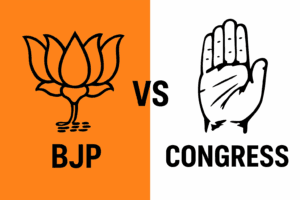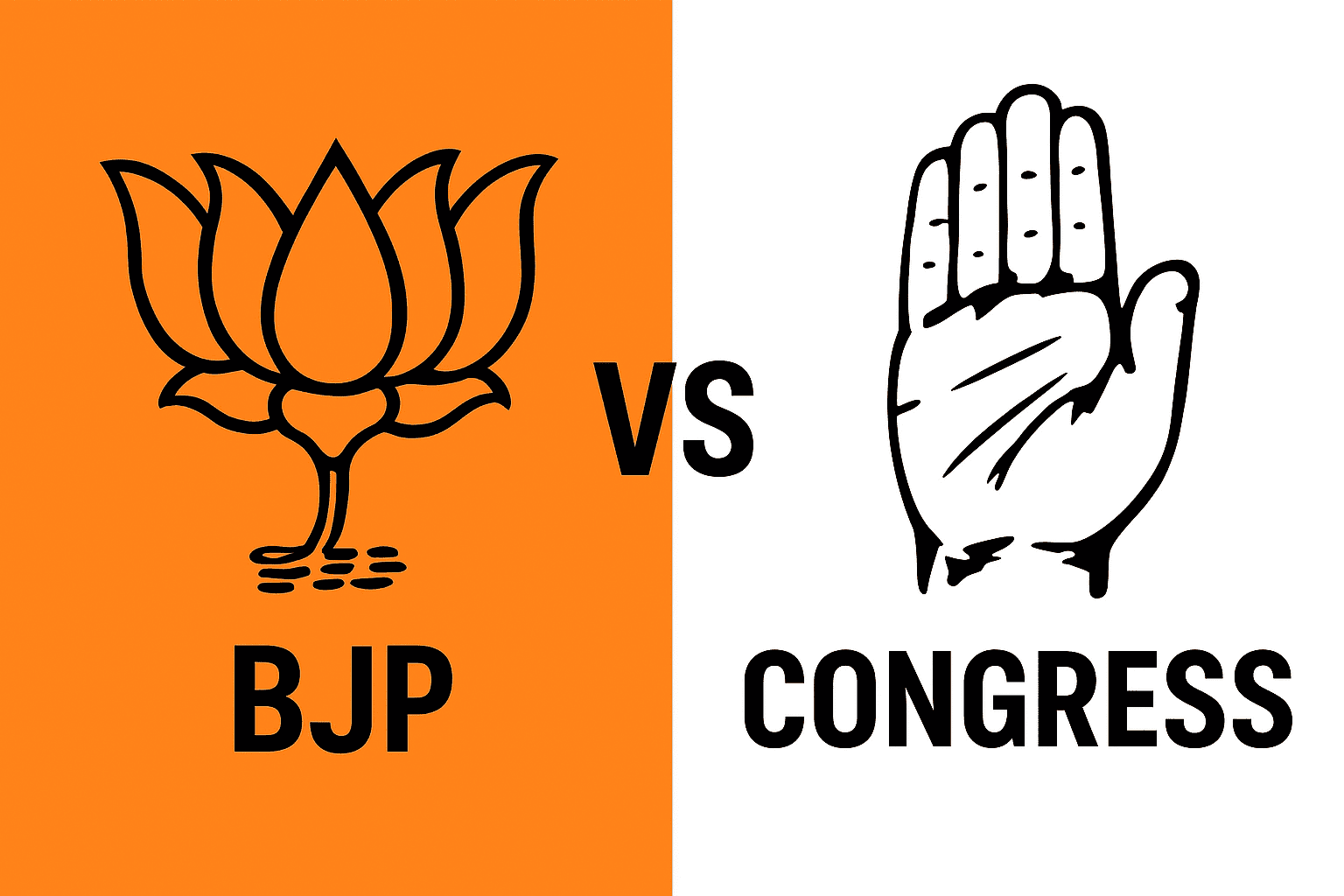Love marriages in India are experiencing higher failure rates than their arranged counterparts, with divorce rates reaching 20-30% compared to just 1-2% in arranged marriages. This emerging trend represents a significant shift in the Indian marital landscape and reflects deeper structural, psychological, and socio-economic transformations. While the overall divorce rate in India remains relatively low at approximately 1-1.5%, the disproportionate representation of love marriages in this statistic demands closer examination. Understanding why love marriages fail requires analyzing multiple interconnected factors ranging from unrealistic expectations and financial stress to evolving gender dynamics and diminishing family support systems.[1][2][3][4][5]

Comparison of divorce rates between love marriages and arranged marriages in India shows that love marriages have significantly higher divorce rates (20-30%) compared to arranged marriages (1-2%).
The Paradox of Passion: When Romance Meets Reality
Love marriages begin with an inherent advantage—emotional connection, mutual attraction, and the freedom of choice. However, this initial phase of intense passion, commonly termed the “honeymoon phase,” can become a double-edged sword. Research indicates that this euphoric period typically lasts anywhere from a few weeks to several months, during which neurochemical responses create an idealized perception of one’s partner. During this phase, couples often overlook compatibility issues, communication problems, and lifestyle incompatibilities because they are intoxicated by romantic feelings.[6][7][8][9]
The transition from the honeymoon phase to what relationship experts call the “reality-check stage” proves particularly challenging for love marriages. This period, typically occurring between one to two years into the relationship, strips away the rose-colored glasses and forces couples to confront their partner’s flaws, quirks, and behavioral patterns they previously ignored. Unlike arranged marriages where expectations are often pragmatic from the outset, love marriages suffer from the dissonance between the idealized romance and the mundane realities of daily cohabitation.[10][11][7]
Unrealistic Expectations and Media Influence
One of the most significant contributors to love marriage failure is the burden of unrealistic expectations. Couples entering love marriages often carry assumptions shaped by Bollywood narratives, social media portrayals, and Western romantic ideals that suggest love conquers all. A study examining social media’s impact on Indian marriages revealed that platforms like Instagram create idealized images of marriage, leading to heightened and often unrealistic expectations.[12][6][13][10][14][15]
These expectations manifest in various problematic ways. Partners may expect their spouse to fulfill all their emotional, social, and personal needs—an impossible standard that creates undue pressure and inevitable disappointment. The belief that constant affection, perpetual agreement, and mind-reading abilities should characterize the relationship sets couples up for failure. When the initial romantic intensity fades—as it naturally does—couples interpret this as evidence that they chose the wrong partner rather than understanding it as a normal relationship evolution.[16][6][17][10][11]
Social media exacerbates this problem by enabling constant comparison with others’ curated marital experiences. The pressure to maintain an “Instagram-worthy” marriage adds stress to relationships already struggling with the gap between expectation and reality. Research indicates that 67% of Indian couples have regular arguments about various issues, and many of these conflicts stem from unmet expectations established during the courtship period.[18][19][14][15][20]
Financial Stress: The Silent Marriage Killer

The primary factors contributing to love marriage failures in India, with financial stress (42%) and unrealistic expectations (35%) being the leading causes, followed by in-law interference and communication issues.
Money as the Primary Conflict Trigger
Financial stress has emerged as the leading cause of marital discord and divorce in India, with studies indicating that 40-43% of divorces directly cite financial issues as a contributing factor. The data is sobering: 67% of couples surveyed admitted to arguing about money at least once every 15 days, while 90% reported at least one monthly financial dispute. For couples with negative net worth, the situation becomes even more dire, with 100% reporting financial arguments.[21][18][19]
The financial dimension of love marriage failure operates on multiple levels. First, many couples enter love marriages without adequately discussing financial expectations, management strategies, or long-term economic goals. Unlike arranged marriages where families often conduct extensive financial due diligence and ensure economic compatibility, love marriages prioritize emotional connection while sidelining practical financial planning. This oversight proves devastating when couples face real-world financial pressures including housing costs, healthcare expenses, childcare, and career uncertainties.[22][17][23][11][24]
Second, the economic burden of divorce itself creates a vicious cycle. Recent survey data reveals that 49% of men and 16% of women spend over Rs 5 lakh on divorce proceedings alone—not including alimony payments. Shockingly, 42% of men surveyed had to take loans to cover alimony or legal costs, while 29% paid alimony despite having negative net worth. On average, 38% of a man’s annual income goes toward maintenance payments, creating severe financial strain. For women, the financial disruption is equally significant, with 23% having to relocate to a new city, 30% leaving their jobs entirely, and 16% reducing work intensity post-divorce.[18][19]
Dual-Income Dynamics and Work-Life Conflicts
The rise of dual-income households in urban India has introduced new financial stressors and role conflicts that disproportionately affect love marriages. While dual incomes theoretically provide greater financial stability, they also create complications around household responsibility sharing, time management, parenting duties, and career prioritization. Research on dual-career couples in Indian cities reveals that financial concerns, household responsibility sharing, time management, and relationship with in-laws consistently trigger marital arguments.[25][26][27]
The traditional expectation that women should manage household duties while also contributing financially creates what researchers term “work-family conflict” and “family-work conflict”. Despite more women entering the workforce, many Indian men remain unaccustomed to sharing domestic responsibilities equitably—a cultural lag that generates significant friction. Women in dual-income arrangements often face the double burden of professional obligations and household management, leading to exhaustion, resentment, and marital dissatisfaction.[5][26][28][25]
Communication Breakdown and Emotional Distance
Poor communication emerges as a critical factor in love marriage failures, with approximately 28% of divorces citing communication problems as a primary issue. Despite spending considerable time together before marriage, many couples in love marriages fail to develop effective communication skills for navigating conflict, expressing needs, and maintaining emotional intimacy.[29][17][30]
A fundamental communication error in many love marriages is the assumption that partners should instinctively understand each other’s thoughts, feelings, and needs without explicit expression. This expectation of “mind-reading abilities” places unrealistic pressure on relationships and leads to accumulated resentment when unspoken expectations go unfulfilled. Research on Indian marriages highlights that many couples struggle with active listening, frequently interrupting each other, focusing on their own responses rather than understanding their partner’s perspective, and showing disinterest through body language.[6][17][30][29]
Elder-Driven Decisions and Communication Silencing
In the Indian context, communication challenges are compounded by family dynamics and cultural norms that often sideline the couple’s individual voices. Even in love marriages, elder-driven decision-making can override the couple’s personal preferences regarding lifestyle choices, career decisions, and daily routines. When couples fail to establish clear communication boundaries with extended family members early in their marriage, they create space for external interference that undermines their relationship foundation.[29][31]
The traditional Indian family structure, which emphasizes respect for elders and collective decision-making, can inadvertently stifle open dialogue between married partners. Women especially may struggle to express their needs and concerns if they perceive that doing so would violate cultural expectations of wifely duty and deference. This communication suppression leads to emotional distancing, where partners coexist without genuine connection—a phenomenon increasingly recognized as “silent divorce”.[32][33][34][35][29]
In-Law Interference and Family Dynamics
Parental and in-law interference represents a significant factor in love marriage failures, affecting approximately 30% of divorcing couples. While arranged marriages typically benefit from strong family support and established relationships between families, love marriages—particularly those that occur against family wishes or across caste/religious lines—often face active opposition or subtle undermining from extended family members.[36][37][11]
The manifestations of family interference vary widely, from minor irritations like unsolicited advice about home decor to major intrusions such as emotional blackmail regarding childbearing timelines. Research on divorce reasons in West Bengal found that in-law interference was more prevalent and severe in arranged marriages, but when it occurs in love marriages, it proves particularly destructive because couples often lack the family support network needed to navigate such conflicts.[37][31][38]
High Court cases in India have documented instances where excessive family interference—particularly parents exercising undue influence over adult children—has been recognized as grounds for divorce on the basis of cruelty. When a spouse remains under the controlling influence of parents to the extent that it prevents the establishment of a genuine marital bond, the relationship becomes untenable.[39][40]
A critical disadvantage facing many love marriages is the absence of comprehensive family support. Arranged marriages inherently involve both families from the beginning, creating built-in support systems for navigating challenges, resolving conflicts, and managing life transitions like childbirth and career changes. Families in arranged marriages have invested in the union and maintain stake in its success, often providing mediation, financial assistance, and practical help when needed.[1][11][24][41][42][43]
Conversely, love marriages—especially those opposed by families or involving inter-caste, inter-religious, or inter-regional unions—may find themselves isolated from traditional support networks. This isolation proves particularly problematic during crises when couples most need guidance, perspective, and assistance. Without family backing, couples face challenges alone, intensifying stress and reducing their capacity to weather difficult periods.[11][24][31]
Compatibility Issues and Overlooked Red Flags
While love marriages theoretically offer the advantage of partner selection based on compatibility and shared values, research reveals a paradoxical reality: approximately 25% of divorcing love marriage couples cite compatibility issues as a primary factor in their separation. The explanation lies in the distinction between emotional attraction and practical compatibility.[11][44][41]
During courtship, romantic intensity can obscure fundamental incompatibilities in values, life goals, communication styles, financial philosophies, parenting approaches, and lifestyle preferences. Experts note that couples often overlook these critical compatibility factors because their emotional connection feels sufficient to overcome any obstacle. However, once married and facing daily realities, these overlooked differences surface as persistent sources of conflict.[6][44][7][11]
The absence of family vetting in love marriages means that practical compatibility factors—which families in arranged marriages carefully evaluate—may receive insufficient attention. Questions about long-term career aspirations, approaches to money management, expectations about division of household labor, attitudes toward parenting, and boundaries with extended family often remain inadequately addressed until after marriage, when addressing them becomes significantly more challenging.[1][24][45][11]
Love marriages can suffer from priority misalignment, where partners emphasize emotional connection while deprioritizing practical matters. This creates vulnerability when couples must make concrete decisions about finances, career relocations, childbearing, eldercare, and lifestyle choices. Research indicates that couples who fail to discuss these practical elements before marriage face significantly higher conflict rates after marriage.[17][11][45][46]
Rising Rates of Extramarital Affairs
Infidelity has emerged as a significant factor in love marriage failures, with approximately 21% of divorcing couples citing extramarital affairs as a contributing cause. Recent data from extramarital dating platforms reveals startling trends: surveys indicate that 48-53% of Indian adults have admitted to infidelity, with India ranking among the highest globally for admitted affairs.[47][48][49][50]
The infidelity landscape in India is evolving rapidly. A 2025 survey comparing data to 2023 found a 16% decline in physical infidelity, suggesting not necessarily increased faithfulness but rather shifting relationship paradigms. Nearly half of respondents surveyed do not believe humans are naturally monogamous, and 61% feel societal pressure to maintain monogamy despite personal instincts. This ideological shift reflects broader questioning of traditional marital expectations and exclusivity norms.[48]
Interestingly, infidelity patterns reveal complex gender dynamics. One survey of extramarital affair users found that 77% of women admitted to seeking affairs because their marriages had become monotonous, with 70% specifically citing husbands’ failure to contribute to household chores as a motivating factor. Metropolitan cities including Mumbai, Delhi, and Kolkata showed the highest rates of married women engaging in extramarital relationships. The growth of discreet dating platforms and increased smartphone penetration in tier-2 and tier-3 cities is facilitating infidelity across urban and semi-urban India.[51][49][52][50]
Trust, Technology, and Surveillance
Social media and digital technology have profoundly impacted marital trust dynamics. Many couples cite excessive social media usage, online affairs, and privacy violations as major relationship stressors. The digital footprint—WhatsApp messages, social media interactions, GPS locations—has become both a source of suspicion and evidence in divorce proceedings. Courts increasingly accept digital evidence to prove infidelity, creating a surveillance culture within marriages that further erodes trust.[14][20][53]
Cultural Shift: Individualism Versus Collectivism
India’s transition from a predominantly collectivistic society to one increasingly influenced by individualistic values represents a fundamental factor in changing marriage dynamics. Traditional Indian culture emphasized family cohesion, duty fulfillment, and subordination of individual desires to collective needs. Marriage was understood as a union between families rather than individuals, with success measured by fulfillment of familial responsibilities rather than personal happiness.[54][55][34][56][57]
Contemporary generations, particularly millennials and Gen-Z, increasingly prioritize personal well-being, career goals, emotional wellness, and individual autonomy before committing to marriage. Marriage is increasingly viewed as one life aspect rather than a defining necessity. This ideological shift creates tension between traditional expectations and modern aspirations, particularly when couples marry for love against family preferences or cultural norms.[34][5][58]
Love marriages inherently reflect individualistic values—the primacy of personal choice and romantic preference over family arrangement. However, when these marriages confront India’s still-predominantly collectivistic family structures and social expectations, conflict becomes inevitable. Couples find themselves navigating contradictory value systems, attempting to balance personal autonomy with family obligations, and negotiating competing definitions of marital success.[29][55][57][34]
Women’s Empowerment and Changing Gender Dynamics
The empowerment of Indian women—through education, economic independence, and legal awareness—has fundamentally altered the marriage landscape and directly influenced rising divorce rates. Women now initiate approximately 70% of divorces globally, with India following this trend. Financial independence gives women the power to exit unhappy marriages without facing economic devastation.[33][35][5][58]
This empowerment represents positive social progress, enabling women to escape abusive relationships, demand mutual respect, and refuse to endure marriages characterized by neglect or mistreatment. However, it also creates friction in marriages where traditional gender role expectations persist. The lag between women’s increased workforce participation and men’s adaptation to shared domestic responsibilities generates significant marital tension. Women increasingly refuse to accept the double burden of career and household management while men struggle to redefine masculinity beyond the sole provider role.[35][5][26][33]
Absence of Premarital Counseling and Preparation
A critical but often overlooked factor contributing to love marriage failure is the absence of premarital counseling and structured relationship preparation. While couples spend considerable time and resources planning elaborate weddings, they invest minimal effort in preparing for the actual marriage. Studies indicate that premarital counseling can reduce divorce likelihood by up to 50%, yet this practice remains uncommon in India.[59][45][46][60]
Premarital counseling serves multiple essential functions: it helps couples align expectations about finances, intimacy, family roles, career priorities, and conflict resolution. It creates space for discussing potentially uncomfortable topics including sexual compatibility, parenting philosophies, eldercare responsibilities, and lifestyle preferences before these become sources of marital conflict. For couples from diverse backgrounds—different religions, regions, castes, or family structures—counseling provides tools for bridging cultural gaps and blending traditions.[45][46]
The Indian cultural context makes premarital counseling particularly valuable because it addresses the intersection of individual desires and family expectations. Counselors help couples navigate the complexity of honoring familial traditions while establishing independent household identities and boundaries. They teach conflict resolution tactics that emphasize understanding and respect rather than blame and defensiveness.[46][61][45]
Lack of Relationship Education
Beyond formal counseling, Indian society provides minimal relationship education or marriage preparation training. Young people receive extensive academic instruction but little guidance on emotional intelligence, effective communication, conflict resolution, or partnership skills. Many enter marriage assuming that love alone provides sufficient foundation, only to discover that maintaining a healthy long-term relationship requires specific competencies they have not developed.[34][45][46][60]
The absence of relationship education means couples often learn through trial and error—a process that damages relationships and accumulates resentment before partners acquire necessary skills. By contrast, even brief premarital education programs that teach communication techniques, expectation alignment, and conflict management strategies significantly improve marital satisfaction and reduce divorce rates.[17][30][60][61]
Evolving Social Attitudes and Reduced Stigma
Rising divorce rates in love marriages reflect not only increased relationship failure but also reduced social stigma surrounding divorce and growing acceptance of separation as a legitimate choice. Historically, Indian society strongly discouraged divorce, viewing it as shameful failure and pressuring couples—particularly women—to endure unhappy or even abusive marriages. The low historical divorce rate often reflected social coercion rather than genuine marital happiness.[62][16][54][63][32][5][53]
Contemporary attitudes, especially in urban areas, increasingly frame divorce as a personal decision rather than societal catastrophe. People are less willing to sacrifice mental health and personal fulfillment for social acceptance. The younger generation questions whether endurance in unhappy marriages constitutes success or whether authentic well-being should be prioritized.[32][5][58][53][64][62]
This attitudinal shift particularly benefits women who historically bore the greatest burden of divorce stigma and faced severe economic and social consequences for leaving marriages. Today’s empowered women possess education, career options, legal awareness, and social support that make divorce a viable option rather than social death sentence. Greater legal awareness regarding divorce rights and simplified procedures including mutual consent divorce have made separation more accessible.[33][35][5][58][53]
Paradoxically, while explicit divorce rates rise, many Indian marriages exist in states of “silent divorce”—unions that persist on paper while lacking emotional or physical connection. These couples remain married due to children, financial considerations, family pressure, or social expectations while living essentially separate lives. The reality of silent divorce challenges the assumption that low historical divorce rates indicated marital success, revealing instead a culture of endurance rather than happiness.[16][32]
India’s Supreme Court recently observed that “most divorces are arising from love marriages,” adding judicial recognition to this growing trend. This statement reflects documented patterns showing love marriages, despite beginning with emotional connection and mutual choice, struggle to sustain themselves relative to arranged marriages. The Court’s observation reinforces that emotional intensity alone proves insufficient for navigating the practical realities of married life—realities that arranged marriages address more systematically through family involvement and pragmatic compatibility assessment.[24]
Comparative Perspective: Why Arranged Marriages Appear More Successful
Understanding love marriage failure requires examining why arranged marriages demonstrate greater apparent success. Multiple factors contribute to arranged marriages’ lower divorce rates of 1-2%:[1][65][2]
Family Support Systems: Arranged marriages benefit from comprehensive family investment, support, and mediation throughout the marital journey. Both families maintain stake in the marriage’s success and actively work to resolve conflicts, provide financial assistance, and offer practical help.[24][41][42][1]
Pragmatic Foundations: Arranged marriages prioritize practical compatibility factors including financial stability, educational background, family reputation, and shared values from the outset. This pragmatic approach, while less romantically intense, creates stability when facing life challenges.[59][1][24]
Managed Expectations: Partners in arranged marriages typically enter with realistic, modest expectations, understanding that love and companionship develop gradually through shared experience. This contrasts sharply with love marriages’ often unrealistic expectations of perpetual passion and perfect compatibility.[13][10][56][11][1][59]
Gradual Love Development: Research suggests arranged marriages may experience deepening love over time as partners navigate life together, build shared experiences, and develop genuine understanding. The commitment comes first, with emotional intimacy following—an inverse sequence that paradoxically may prove more sustainable.[56][1][59]
Social Pressure to Persist: Arranged marriages face stronger social pressure to succeed, with divorce carrying greater stigma. While this pressure can trap people in unhappy marriages, it also motivates couples to work through difficulties rather than separate at first signs of trouble.[16][66][63]
Lower Initial Conflict: Without the dissonance between honeymoon phase intensity and post-marriage reality, arranged marriages may avoid the dramatic disillusionment that challenges love marriages.[7][43][67]
However, these factors don’t necessarily indicate that arranged marriages are happier—only that they persist longer. Many arranged marriages endure despite dissatisfaction, incompatibility, or abuse because social and economic factors prevent separation.[62][63][16][59]
Conclusion: The Complex Reality of Love Marriage Failure
The failure of love marriages in India stems from multiple intersecting factors rather than single causes. Financial stress, unrealistic expectations, communication breakdowns, in-law interference, compatibility issues, infidelity, cultural transitions, gender role evolution, and inadequate preparation collectively contribute to divorce rates of 20-30% in love marriages compared to 1-2% in arranged marriages.[1][2][3]
These failures reflect both relationship-specific challenges and broader societal transformations. India’s transition from collectivistic to individualistic values, women’s empowerment, reduced divorce stigma, urbanization, nuclear family predominance, and exposure to global relationship models fundamentally alter marital expectations and dynamics. Love marriages, representing the vanguard of these changes, bear the full force of resulting tensions.[62][54][55][34][5][57]
Yet rising divorce rates shouldn’t be interpreted purely negatively. They reflect growing individual autonomy, refusal to endure unhappy or abusive relationships, and prioritization of mental health over social expectations. The ability to exit marriages that don’t serve personal well-being represents social progress rather than moral decline.[54][33][5][58][62]
The solution lies not in rejecting love marriages or romanticizing arranged marriages but in addressing the factors that undermine marital success regardless of marriage type. Comprehensive premarital counseling, realistic relationship education, financial literacy, communication skills training, boundary-setting with extended family, and mutual commitment to relationship maintenance can significantly improve outcomes.[45][46][60][61]
Ultimately, successful marriages—whether love or arranged—depend less on their origin than on both partners’ dedication to creating strong, lasting connections based on mutual respect, effective communication, realistic expectations, and continuous effort to adapt to life’s inevitable changes. As Indian society continues evolving, marriage institutions must similarly adapt, incorporating the emotional authenticity that love marriages offer while retaining the pragmatic wisdom and family support that strengthen arranged marriages.[3][24][46][61][42][43]












